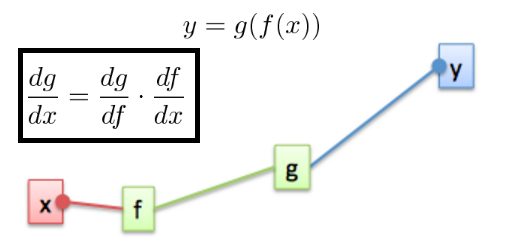After weeks trying to get into the very depth of the question as someone who's not from a maths background, neither data science, I figured out how it works internally.
This is one, raw way to make it work, and my implementation, haven't seen it anywhere implemented like this, I'm pretty sure there are more modern ways to do it, so if you want, use it with caution.
Here's the code:
const SNN = ({
trainFeatures = [],
trainLabels = [],
layers = [
{
type: 'mlp',
size: 10,
},
{
type: 'sigmoid'
},
{
type: 'mlp',
size: 12,
},
{
type: 'sigmoid'
},
],
learningRate = 0.1,
batchSize,
standardize = false,
}) => {
const { mean, variance } = tf.tidy(() => {
const { mean, variance } = tf.moments(trainFeatures, 0);
const filler = variance
.cast("bool")
.logicalNot()
.cast("float32");
return { mean, variance: variance.add(filler) };
});
learningRate = tf.tensor(learningRate);
trainFeatures = standardize
? standardizeFeatures(trainFeatures, mean, variance)
: trainFeatures;
//make sure there's a last layer matching the label size, with sigmoid activation
layers.push(
{ type: 'mlp', size: trainLabels.shape[1] },
{ type: 'sigmoid'}
);
layers.forEach((layer, i) => {
if (layer.type === 'mlp') {
const { size } = layer;
const prevSize = (
layers
.slice(0, i)
.filter(({ type }) => type === 'mlp')
.reverse()[0]
|| {}
).size || trainFeatures.shape[1];
const bias = 1;
layer.weights = tf.truncatedNormal([
bias + prevSize, size
]);
}
})
const getActivationsOfLayers = featureSet =>
tf.tidy(() => {
const activations = [featureSet];
layers.forEach(layer => {
const prevLayerActivations = activations[activations.length - 1]
if (layer.type === 'mlp') {
const { weights } = layer;
const currentLayerActivations = prevLayerActivations
.pad([[0,0],[1,0]], 1) //add 1 padding for bias
.matMul(weights);
activations.push(currentLayerActivations);
} else if (layer.type === 'relu') {
const { slope } = layer;
const currentLayerActivations = prevLayerActivations
.leakyRelu(slope);
activations.push(currentLayerActivations);
} else if (layer.type === 'sigmoid') {
const currentLayerActivations = prevLayerActivations
.sigmoid();
activations.push(currentLayerActivations);
}
});
return activations;
});
const getCost = (predictionLabelSet, labelSet) =>
predictionLabelSet
.sub(labelSet)
.pow(2)
.sum()
.div(labelSet.shape[0]);
const gradientDescent = (activationsOfLayers, labelSet) => {
let dCda = activationsOfLayers[activationsOfLayers.length - 1]
.sub(labelSet)
.mul(2);
for (let layerIndex = layers.length - 1; layerIndex >= 0; layerIndex--) {
const nextActivations = activationsOfLayers[layerIndex + 1];
const activations = activationsOfLayers[layerIndex];
const layer = layers[layerIndex];
if (layer.type === 'sigmoid') {
//rows will be activations, columns will be observations
const dadn = nextActivations
.sub(1)
.mul(nextActivations)
.mul(-1);
dCda = dCda.mul(dadn);
} else if (layer.type === 'relu') {
const { slope } = layer;
const dadn = nextActivations
.step(slope);
dCda = dCda.mul(dadn);
} else if (layer.type === 'mlp') {
const { weights } = layer;
//rows will be activations, columns will be observations
const dadw = activations
.pad([[0,0],[1,0]], 1)
.transpose();
const dCdw = dadw.matMul(dCda);
const newWeights = weights.sub(dCdw.mul(learningRate));
layer.weights = newWeights;
dCda = dCda
.matMul(
weights
.slice([1, 0], [-1, -1])
.transpose()
);
}
}
};
const train = (iterations = 100) => {
const batchQuantity = Math.floor(trainFeatures.shape[0] / batchSize);
for (let i = 0; i < iterations; i++) {
for (let j = 0; j < batchQuantity; j++) {
const startRowIndex = j * batchSize;
const endRowIndex = batchSize;
const featureSet = trainFeatures.slice(
[startRowIndex, 0],
[endRowIndex, -1]
);
const labelSet = trainLabels.slice(
[startRowIndex, 0],
[endRowIndex, -1]
);
const activationsOfLayers = getActivationsOfLayers(featureSet);
const predictionLabels =
activationsOfLayers[activationsOfLayers.length - 1];
const cost = getCost(predictionLabels, labelSet);
cost.print();
gradientDescent(activationsOfLayers, labelSet);
tf.dispose([featureSet, labelSet, activationsOfLayers]);
}
}
};
const predict = featureSet => {
featureSet = standardize
? standardizeFeatures(featureSet, mean, variance)
: featureSet;
const activationsOfLayers = getActivationsOfLayers(featureSet);
const predictionLabels = activationsOfLayers[
activationsOfLayers.length - 1
].softmax();
return predictionLabels;
};
const test = ({ testFeatures, testLabels }) =>
tf.tidy(() => {
const numberOfObservations = tf.tensor(testLabels.shape[0]);
testLabels = testLabels.argMax(1);
testLabels.print();
const predictionLabels = predict(testFeatures).argMax(1);
predictionLabels.print();
const incorrect = predictionLabels.notEqual(testLabels).sum();
return numberOfObservations.sub(incorrect).div(numberOfObservations);
});
return {
train,
test
};
};
Basically because of matrix multiplication it doesn't matter how many items are in your batch.
We update our weights with dCdw (effect of weight on Cost), and we get dCdw by matrix multiplying dadw (effect of weight on its activation) with dCda (effect of activation on Cost). In case of the last layer, dCda is (a - y) * 2 (if cost function is mean squared error), and dadw is the previous layer's activations. One of their axes will have the same shape guaranteed, and it will be the batch size. So you can have any inputs (in the question by inputs I meant batch size), because the other size of each matrices are the sizes of the weights of their layers (and I find this beautiful).
If on the one before last layer you have 3 neurons, on the last layer, you have 2 neurons, you will have a weight between them with shape [2,3] (or [3,2] depending on which direction you go). Batch size is x (to demonstrate it can be anything). One before last activations will have a shape of [x,3]. You matmul it with the weights with shape [3,2]. You will receive your last activations (prediction) with shape [x,2].
Your dCda will have a shape of [x,2]. Your dadw is the one before last activations (which had a shape of [x,3]), you transpose it, so it will have a shape of [3,x], and you matmul it with dCda ([x,2]), so you receive a matrix (dCdw) with shape [3,2] which is the shape of the weights. And we update the weights with it by multiplying with learning rate etc.
As you can see from the code, on which depth you are in your layer on neurons doesn't really matter, you just update dCda by matmulling the last dCda with your transposed weights.
I hope it will help someone, and save some time, but what I suggest to understand backpropagation is to take a simple network (like a 2-3-2), and write down one by one which activation does what. I have my notes on it, and if it would help anyone, I'm happy to share, but I don't think it's worth cutting down the path.

